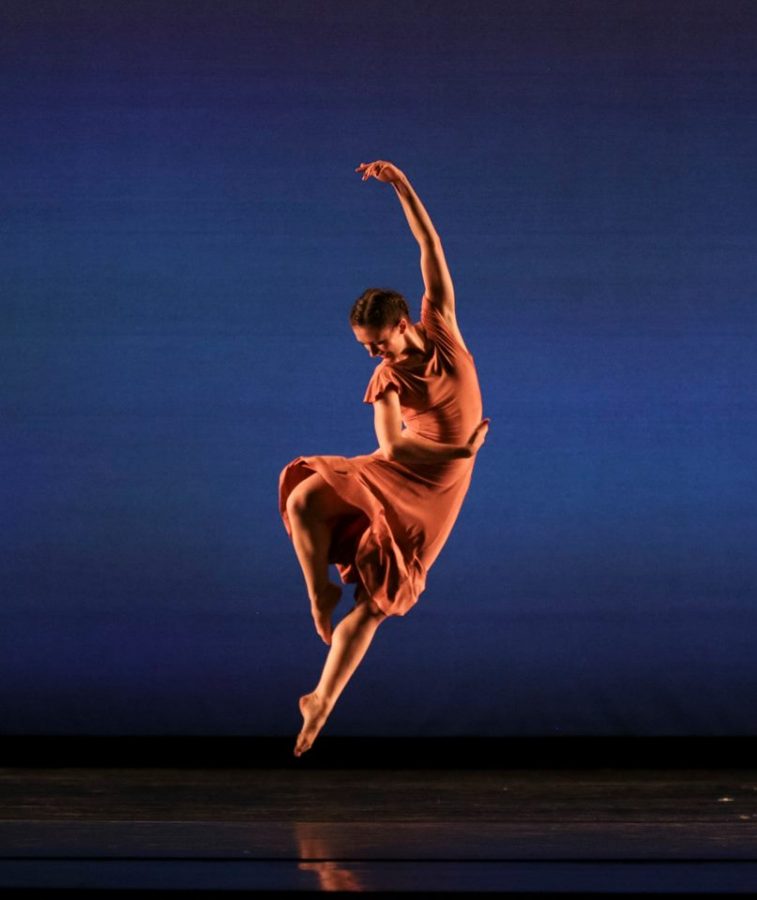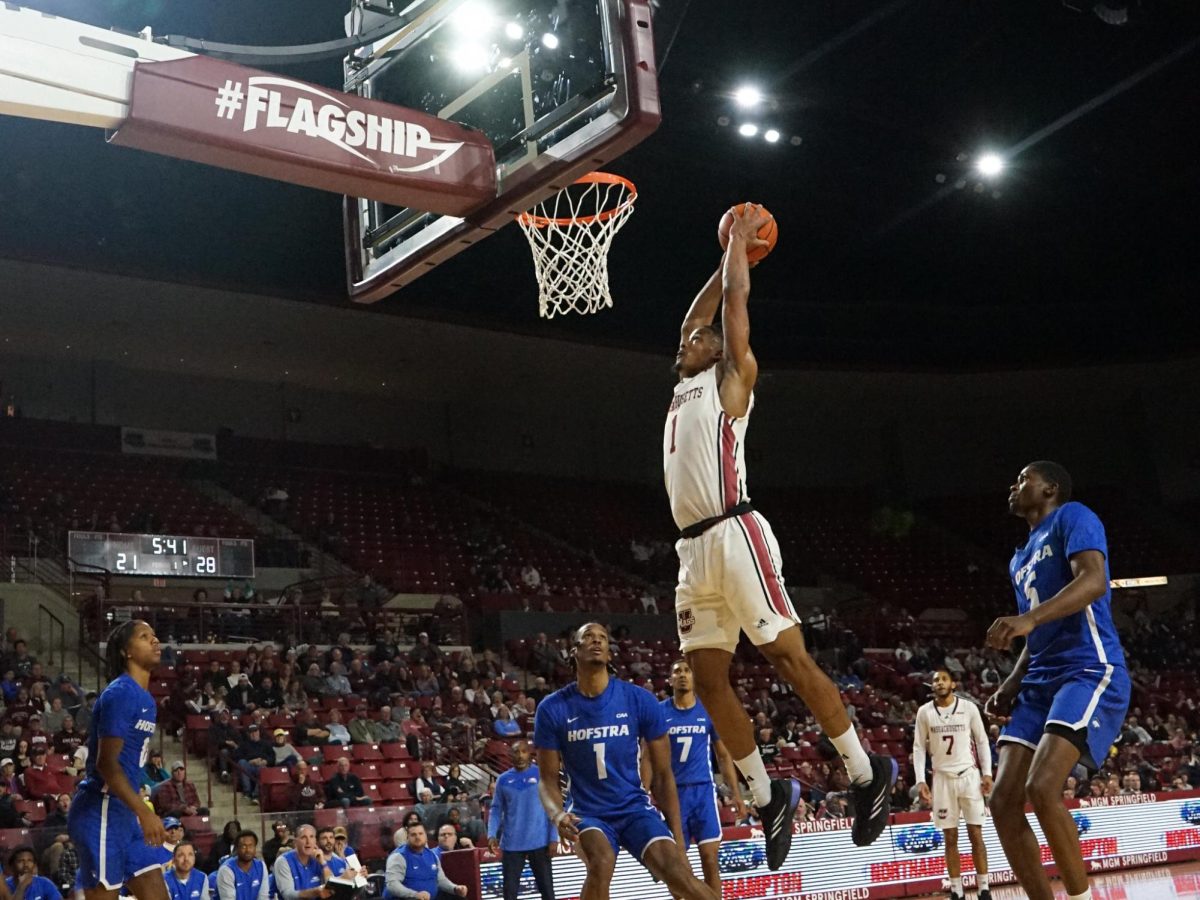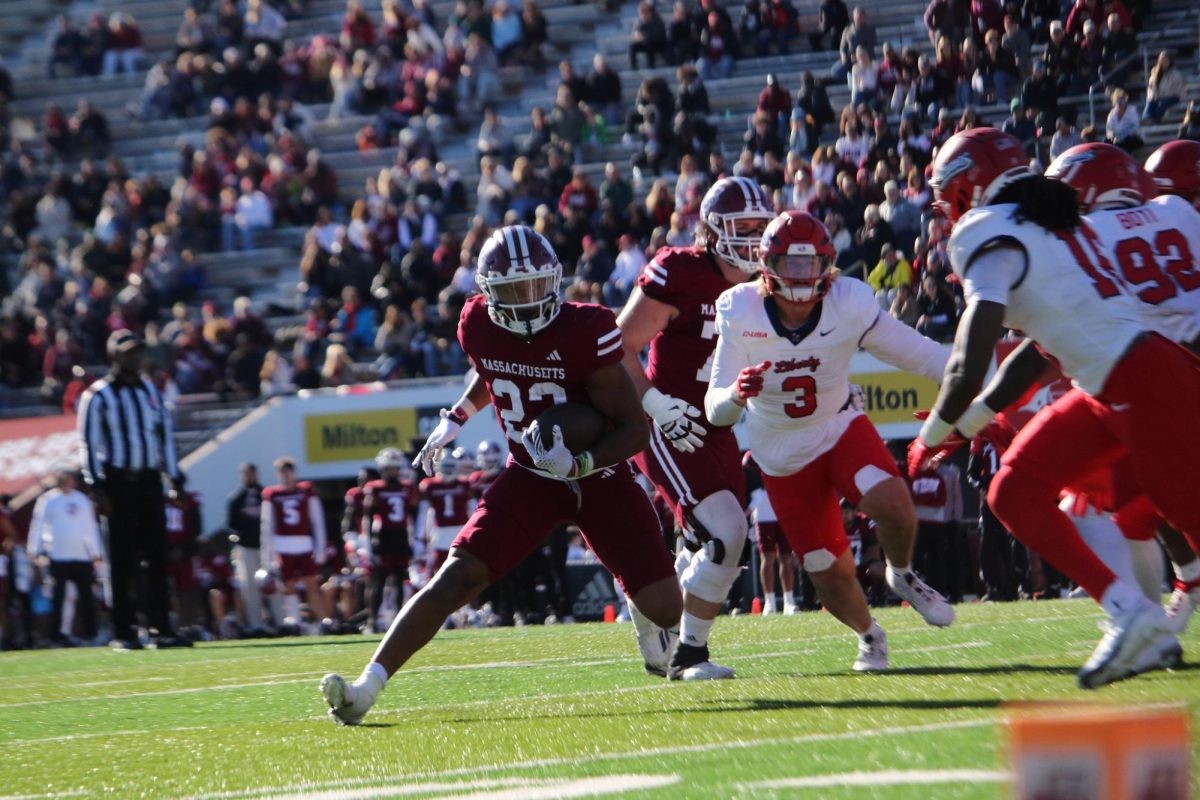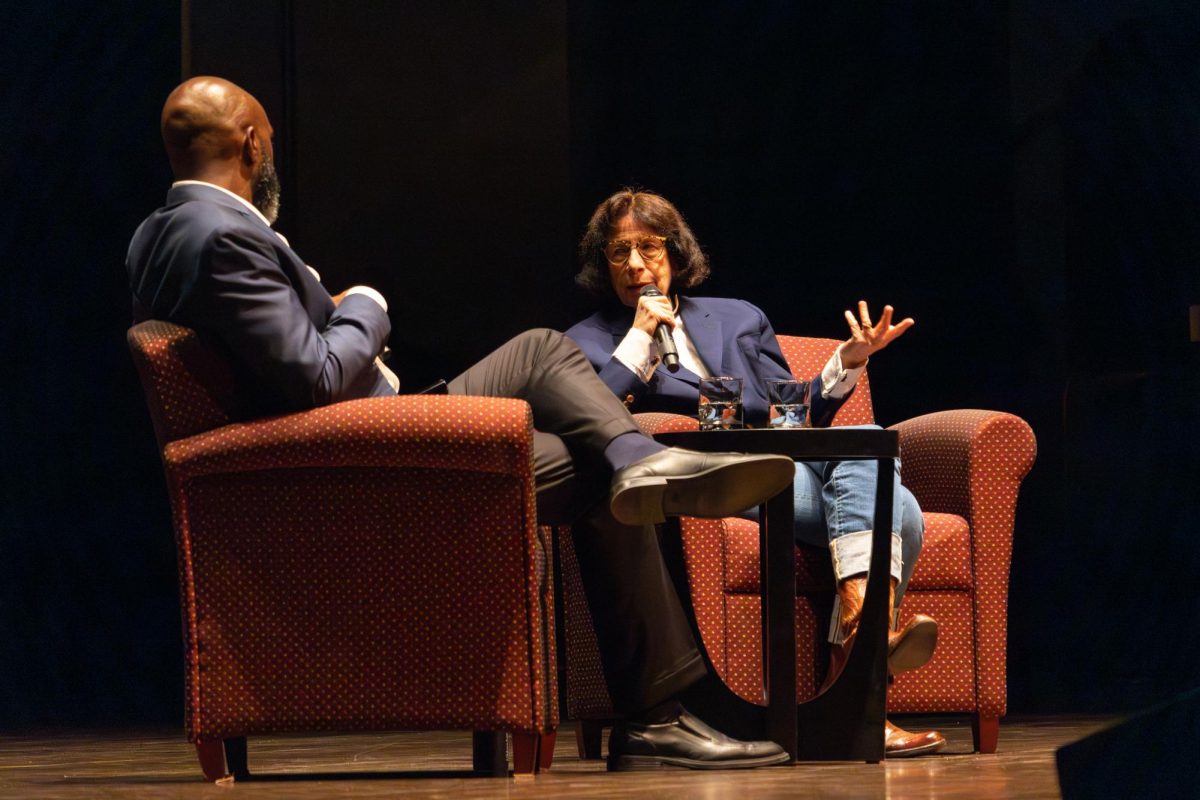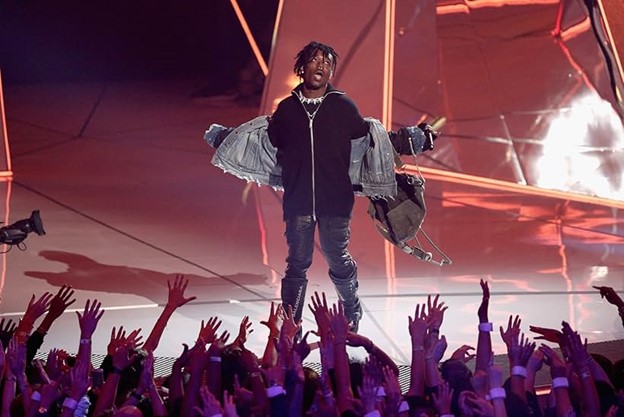To honor an art form, creators and audiences alike must reflect and respond to its evolution. “Reflect/Respond: A Limón Legacy Dance Concert” seeks to appreciate the impact José Limón has had on dance and society as a whole over the history of modern dance.
The Limón Dance Company, founded in 1946 by José Limón and Doris Humphrey and currently directed by Colin Connor, “brings the immediacy of our common experience onto the stage, exuberantly and intensely, with musical and fully lived dancing,” as stated on their site.
The company’s works address greater social issues as well as individual struggles and triumphs, keenly using the body as an instrument for community-building and revelation. Directed by Paul Dennis, students of the University of Massachusetts dance department and dancers from the Limón Dance Company graced the Fine Arts Center stage last Friday in an emotionally-provoking and physically dynamic concert.
The first of three pieces, “The Exiles,” shined with its emotional accents and languid movement. Performed by Savannah Spratt and David Glista of the Limón Dance Company, the duet pushed and pulled through space and sensation. Choreographed by Limón himself and set to music by Arnold Schoenberg, the feel of the dance vacillated between tender togetherness and fear of the unknown.
Much of the piece flowed but at times, as the strings surge shrilly, a leg swept into the air or an arm shot above the head. There was something desperate in the way the dancers moved — perhaps it’s the way they threw their heads into their arms or doubled over as if in pain. “The Exiles” was sometimes aloof, sometimes impassioned and always raw.

Limón’s “A Choreographic Offering” was a visual treat in formation, action and color. It was eye-dazzling to watch its cast of 12 UMass dancers unlock and unfurl in an array of figures – to see performers play with synchronicity and canon alike. As a whole, they danced in unison, skirts swirling as they turned in place or flying as they leapt in the air. Small groups then broke off, and they performed the same actions but staggered in timing one after the other, evoking an effect of a kinesthetic echo.
In the middle of the piece, Spratt and Glista reappeared in an invigorating duet, an inspiring projection of what the budding student dancers can achieve in the future. Where “The Exiles” was moody, this piece moved on its toes in a sprightly manor. Patterns unfolded and colors interplayed with each other in “A Choreographic Offering,” an offering that audiences gladly accepted.
The night ended with Guggenheim Fellow David Dorfman’s “Picture This,” a reflection/response to “A Choreographic Offering.” It began with three performers on stage, not dancing, but with one laughing raucously and two embracing and kissing. From then on, sound, movement and words melded together into a piece that literally asked the audience to picture possibility. “Picture this: radical love,” one dancer shouted after a writhing moments-long solo.
At times, “Picture This” teetered on visual cacophony. The colors of the dancers’ costumes were vivid under stage lights and the hefty cast of 16 UMass dancers moved in frenzy, each dancer performing their own solos. Make no mistake, however, their dancing was still calculated enough to not lose control, and it made moments of synchronicity even more impactful: Imagine said frenzy uniting in a mass of flicking arms, thrown skyward then stage-ward, until all are sweeping in the same movement.
What made Friday night’s spread so unique was the communication between each of the pieces. None of them stood alone; in fact, it is as if the feelings evoked in each dance called out to one another, leading one to shout, another to weep, another to question aloud. The FAC audience was lucky to have experienced not only an outstanding performance by members of a world-renowned modern dance company, or even a performance by the UMass dance department students, but all of them, combined together, to truly show the legacy of Limón.
Sam Wong can be reached at [email protected].

